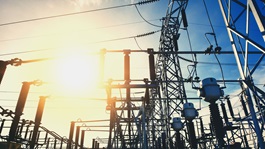On February 6, 2024 the Council of the EU and the European Parliament agreed a provisional version of the Net-Zero Industry Act (NZIA), which is now expected to be formally adopted by the end of April 2024. This will follow the imminent publication of the Critical Raw Materials Act (CRMA) These regulatory initiatives support the February 2023 “Green Deal Industrial Plan for the Net-Zero Age” (the Net Zero Plan). The Net Zero Plan is part of the broader European Green Deal, which aims to make Europe the world’s first climate-neutral continent by 2050.
The Net Zero Plan sets out a significant number of legislative proposals, in addition to the NZIA and the CRMA, and other non-legislative initiatives, including revisions to the EU State aid framework and proposals for new legislation. However, the four goals of the various elements of the Net Zero Plan are:
- A predictable and simplified regulatory environment;
- Faster access to sufficient funding;
- Building and enhancing skills for the net-zero transition; and
- Open trade for resilient supply chains..
In June 2023, the European Commission (EC) adopted changes to its State aid framework to provide extended access to funding. These changes to the State aid framework for net zero industry should also be seen as a response to the cleantech-related investment incentives created by the US Inflation Reduction Act (IRA), offering new opportunities for companies to benefit from State aid and other financial support. They are in part a response to increasing economic competition between trading blocs in the context of the limited supply of raw materials and products necessary for the transition to a net zero economy.
In March 2023, the EC also published its thinking about the design and operation of the European Hydrogen Bank (EHB), intended to facilitate and support the production, import and uptake of renewable hydrogen in the EU (see our briefing here), and in August 2023 terms and conditions for the first EU Hydrogen Bank pilot auction followed.
The parallel reform of the electricity market aims to increase the use of long-term contracts to shield companies and consumers from price spikes, requiring revisions to the Electricity Regulation, the Electricity Directive, and the Wholesale Energy Market Integrity and Transparency (REMIT) Regulation.
1. Extended access to funding for net-zero industry
Funding for the European Green Deal can come from a combination of EU Member States, the EU itself, and private investment.
Funding from the Member States must adhere to the EU State aid rules, and be notified to and approved by the EC before the funding is granted. The State aid General Block Exemption Regulation (GBER) exempts Member States from this notification obligation, as long as all the GBER criteria are fulfilled.
State aid is, in principle, incompatible with the internal market, but where the relevant requirements are met, certain categories of aid must or may be allowed as compatible. The EC adopted the State aid Temporary Crisis Framework (Framework) in March 2022 to specify the criteria for the assessment of compatibility with the internal market of State aid measures that Member States may take to remedy the direct and indirect economic effects following the aggression against Ukraine by Russia, including the countermeasures taken, for example by Russia. In contrast to the GBER, aid granted under this Framework must be notified to the EC, but the EC ensures swift assessment and approval, assuming that all of the conditions are met.
a. GBER
The EC has revised the GBER to raise the State aid notification thresholds and block exempt aid measures by Member States to regulate prices for energy. The Net Zero Plan identifies the following key sectors as likely benefiting from these amendments:
- Carbon capture and storage (CCS);
- Zero-emission vehicles;
- Energy performant buildings; and
- Recharging and refuelling infrastructure.
The revised GBER also:
- Increases and streamlines the possibilities for aid in the area of environmental protection and energy;
- Facilitates the implementation of certain projects involving beneficiaries in several Member States; and
- Extends the possibilities for training and reskilling across sectors by exempting from notification training aid below €3 million.
This revised GBER applies until the end of 2026.
b. Temporary Crisis and Transition Framework
To further enhance Member State flexibility, the EC has transformed the State aid Temporary Crisis Framework adopted in March 2022 into the Temporary Crisis and Transition Framework (TCTF), which will remain in place until December 31, 2025. The key changes will:
- Simplify aid for renewable energy, including renewable hydrogen and biofuel storage;
- Simplify aid for decarbonisation, particularly hydrogen use, energy efficiency and electrification;
- Support new investments including in equipment manufacturing in strategic net zero sectors, incl. via tax benefits; and
- Enable Member States to match aid offered by a third country to competitors outside the EU, subject to certain safeguards.
Other provisions, relating, for example, to aid to compensate for high energy prices or measures aimed at supporting electricity demand reduction, remain applicable until March 31, 2024.
The new EU Wind Power Package encourages EU Member States to make full use of the TCTF to support wind projects.
c. EU funds will be repurposed to allow for additional support
Under the Net Zero Plan, the EC and the EIB will increase EU funding by redirecting financial resources already available under REPowerEU, the InvestEU Programme for private investments and the Innovation Fund, and by increasing financing volumes generally:
- An additional €25.4bn will be added to the existing €225bn of unused loans available under REPowerEU. The Guidance on Recovery and Resilience Plans relating to REPowerEU encourages Member States to create one-stop-shops for approvals, tax breaks and workforce reskilling. A large part of the additional support will come from the Recovery and Resilience Facility (RRF) initially established to address the effects of COVID-19. On April 4, 2023, the EC published updated State aid guidance templates that aim to support Member States in designing measures to implement the REPowerEU plan.
- The InvestEU Fund provides a budget guarantee for public and private investments in sustainable infrastructure and R&D. €11.37bn in funds is still available for 2024 – 2027, but the EC is assessing how to increase this amount. Measures by Member States matching funding through the InvestEU Fund will benefit from a simplification of the rules in the GBER.
- The Innovation Fund subsidises cleantech, for example, through competitive bidding procedures. Financing for wind projects under the new EU Wind Power Package will also be provided through the Innovation Fund.
- On July 12, 2023, the EIB announced that it will support the Green Deal Industrial Plan by increasing support for clean investments to €45bn by 2027, a 50% increase above the EIB’s previously announced REPowerEU package. The EIB will make de-risking guarantees available for wind projects under the new EU Wind Power Package.
- A pilot auction was launched in November 2023 to award up to €800 million to renewable hydrogen producers in the EEA, in the form of a fixed premium in €/kg of renewable hydrogen over ten years. Bidders had until February 8, 2024 to bid.
d. The STEP proposal
On June 20, 2023, the EC proposed the Strategic Technologies for Europe Platform (STEP), allowing existing funding to be directed towards areas of technological development that are crucial for Europe’s leadership. The EC President has proposed that STEP be the precursor to a fully-fledged Sovereignty Fund. However, rather than a Sovereignty Fund, the June 2023 proposal targeted support at particular tech projects. On February 7, 2024, the European Parliament and the Council reached provisional agreement, endorsing the STEP proposal.
STEP is intended to mobilise investments in digital and deep tech, cleantech, and biotech, to strengthen the EU’s sovereignty and long-term competitiveness in critical technologies. STEP is a mix of financial incentives and measures to facilitate the financing of projects, using existing EU programmes and funds, including cohesion policy funds (specific rules and conditions to apply), InvestEU, Horizon Europe, the European Defence Fund (an additional €1.5bn allocated), the Innovation Fund and the Recovery and Resilience Facility.
Under STEP, a Sovereignty Seal will be awarded to projects contributing to STEP objectives as a quality label, helping those projects to access EU funding and attract other investments. A Sovereignty Portal will also operate a one-stop-shop for funding opportunities for STEP projects.
2. EU regulatory initiatives
In her initial presentation of the Net Zero Plan, EC President Ursula von der Leyen acknowledged the need to increase the EU’s manufacturing capacity for net zero technologies and products. To this end, the proposal for the NZIA, which follows the model of the EU Chips Act (see our briefing here), and the CRMA, aim to create a predictable and simplified regulatory environment.
a. NZIA
As noted above, the Council and the European Parliament reached agreement on a provisional text of the NZIA on February 6, 2024. It includes provisions to support the manufacturing of products that are key to meeting climate neutrality goals in “strategic areas” (including batteries, turbines, heat pumps, solar, electrolysers, biogas, grid technologies, and carbon capture) through changes to licensing and authorisation procedures, and support for training and technology development. The debate regarding the inclusion of nuclear energy projects is ongoing, since the EC did not include nuclear as a strategic area. Instead, the EC’s proposal made provision for small modular nuclear reactors and nuclear plants producing limited waste to benefit from certain aspects of the NZIA. The European Parliament committees scrutinizing the proposal endorsed the inclusion of nuclear fission as a strategic area in the negotiating position adopted on October 25, 2023. Investors in strategic areas will benefit from a shortening and simplification of administrative procedures and the introduction of “one-stop-shop” single points of contact.
The provisional text includes nuclear fission energy technologies and nuclear technologies generally as net zero technologies, applying different rules for strategic and non-strategic projects. It also applies to the inputs for the relevant technologies, i.e., components, processed materials, and machinery primarily used for manufacturing.
Strategic projects, selected by Member States with the EC’s participation following resilience and climate criteria, including cross-border initiatives, are encouraged with a view to reaching 2030 targets, including a target that 40% of all clean technology required to meet the REPower EU and Green Deal objectives will be manufactured in the EU.
The provisional NZIA has the following pillars:
- Accelerating CO2 capture, targeting annual 50Mt injection capacity in strategic CO2 storage sites in the EU by 2030, with proportional contributions from oil and gas producers, with the potential for fines for non-compliance.
- Facilitating access to markets by requiring public authorities to consider sustainability and resilience criteria for net zero technologies in public procurement procedures and auctions relating to solar, wind, battery, hydrogen, biogas and biomethane, CCS, electricity grid, nuclear, sustainable alternative fuels, heat pumps and geothermal technologies, and potentially hydropower.
- Enhancing skills, including setting up Net-Zero Industry Academies, with the support and oversight by the Net-Zero Europe Platform, to coordinate action and exchange information. This platform will also enable Member States and the EC to identify financial needs, bottlenecks, and best practices, and provide advice on securing funding.
- Enabling the establishment of ‘net zero sandboxes’ to facilitate the development, testing and validation of innovative net zero technologies. Member States will have to prioritize small and medium-sized enterprises, help them implement regulations, and provide administrative support.
In terms of next steps, we understand that it is the aim for both co-legislators to formally adopt the text before the European Parliament election recess at the end of April 2024.
Finally, the EC revised the Strategic Energy Technology (SET) Plan on October 20, 2023. The SET Plan established an energy technology policy in the EU in 2000, and was updated in 2015. The 2023 update harmonises the strategic objectives of the SET Plan with those of the REPowerEU plan and the NZIA.
b. CRMA
The CRMA (COM(2023)160) is currently in the final stages of formal adoption, and will be published in the EU Official Journal shortly. The CRMA aims to ensure security of supply of raw materials required for the EU net zero technologies. The EC had included adoption of this legislation in its Work Programme 2023 and has regularly updated the list of critical raw materials (available here) that it considers are most important economically and have a high supply risk. The CRMA codifies this critical raw materials list and a new list of strategic raw materials (that are used in strategic sectors such as renewable energy, digital, space and defence technologies). The co-legislators added aluminium to the list of strategic and critical raw materials. The EC will review and, if necessary, update both lists, at least every three years. The CRMA provides a regulatory framework to support the sustainability and circularity of critical raw material supply chains in the EU. The accompanying Communication (COM(2023)165) proposes measures to diversify supply chains through new international mutually supportive partnerships.
The CRMA has the following key pillars:
- Defining priorities and objectives, including benchmarks for capacity in the strategic raw material supply chain and diversifying extraction, processing and recycling.
- Strengthening capacity, e.g., a new framework to select and implement Strategic Projects that can benefit from streamlined permitting, enabling access to finance, and developing exploration programmes in Europe.
- Improving EU preparedness and mitigating supply risks, including monitoring of supply chains, information exchange and coordination on strategic raw materials' stocks among Member States.
- Setting up a “European Critical Raw Materials Board”, composed of Member States and the EC, to advise and coordinate on implementation and discuss strategic partnerships with third countries. The Council has proposed creating sub-groups within the ECRM Board to discuss (i) issues related to public knowledge and acceptance of critical raw materials projects, and (ii) measures to promote the circularity, resource efficiency and substitution of critical raw materials.
- Protecting the environment by improving circularity and sustainability of critical raw materials, including measures to improve collection and recycling of critical raw material-rich waste.
- Diversifying imports of critical raw materials by strengthening global engagement with reliable partners, including partnerships with emerging markets and developing economies.
Following the trilogue agreement, the EU’s goal is to be able to extract 10%, process 40% and recycle 25% of its annual consumption of strategic raw materials by 2030. In addition, not more than 65% of annual consumption of each strategic raw material at any stage of processing should be from a single third country by 2030.
In relation to finance, the Communication acknowledges that private investment may need to be supplemented by State aid, noting that the revised State aid rules give Member States more flexibility to grant aid, including for the production and recycling of critical raw materials related to key net zero technologies.
Notably, under the CRMA the EC will set up and supervise a joint purchasing system for strategic raw materials subject to it being compatible with EU public procurement and competition rules. The joint purchases can be made from suppliers in the EU or third countries, but third country entities (such as those whose countries are members of the Critical Raw Materials Club discussed in section 3 below) will not be able to participate in such a joint purchasing scheme.
Although the final text of the CRMA provides for a number of policies and actions that would make the sourcing of critical raw materials from the EU more attractive, it does not provide clear actions that would ensure that the 2023 extraction, processing and recycling targets will be met by 2030: the CRMA does not provide for clear incentives for EU-based companies to source their critical raw materials in the EU instead of third countries. Although pooling demand in a single order through a joint purchasing scheme may lead to lower prices for participants, the full effect is yet unknown.
c. New European Wind Power package
A number of initiatives will be launched under the October 24, 2023 EU Wind Power Package, including a dedicated EU Wind Charter that was signed by industry and EU Member States on December 19, 2023. A few weeks earlier, the EC launched a dedicated online permitting tool and published a Grids Action Plan to ensure swift implementation of the revised Renewable Energy Directive. To enhance auction design, the EC will also adopt recommendations and guidance that suggest standard elements for auction processes, as part of the new EU Wind Power Package. With the EC’s support, renewable energy trade associations and representatives of installers of clean technologies have set up a large-scale skills partnership for the renewable energy industrial ecosystem in the context of this Package.
3. Trade and resilient supply chains
The fourth pillar of the Net Zero Plan concerns the EU’s international trade policy. The EC is already engaging internationally to diversify the EU’s imports of critical raw materials. Given that the EU will never be self-sufficient, diversification of supply (as required under the CRMA) will require imports from a broader set of countries. To this end, the EC intends to partner with emerging and developing economies within the framework of its Global Gateway Strategy, and to establish a Critical Raw Materials Club (to connect resource-rich countries with large EU consumers of strategic raw materials, and pool investments to enhance supply chains).
On April 5, 2024, the EC announced that the Critical Raw Materials Club will become an integral part of the Minerals Securities Partnership (MSP) Forum. The U.S Government led the creation of the MSP Forum in 2023, and, following the announcement from the EC, the MSP Forum currently has 15 partners (Australia, Canada, Estonia, Finland, France, Germany, India, Italy, Japan, Norway, the Republic of Korea, Sweden, the United Kingdom, the US and the EU). The MSP Forum aims to support and accelerate the implementation of sustainable critical minerals projects and identify policies for boosting sustainable production and local capacities, facilitating regulatory cooperation, and promoting ESG standards in CRM supply chains. Mineral-rich Kazakhstan, Namibia, Ukraine, and Uzbekistan participated in the launch discussions on April 5, 2024.
In addition, the EC is expected to continue to engage with other countries in its efforts to diversify its supply of critical raw materials. To that end, the EU will intensify efforts to conclude free trade agreements with Australia, India, Indonesia and Mexico. It established Strategic Partnerships with Canada and Ukraine in 2021, and with Kazakhstan and Namibia in 2022.
Further, from February 2024, the EC will work with the World Trade Organisation (WTO) on a so-called “subsidies rulebook”, to aid access to foreign markets for EU wind power producers.
On May 1, 2024, the EU-New Zealand trade agreement will enter into force, eliminating export restrictions on energy and raw material goods by prohibiting export monopolies and unjustified governmental intervention. In addition, the EU is in the process of ratifying a free trade agreement with the Mercosur countries, which it reached in June 2019.
Further, a strategic EU – Australia partnership on critical raw materials is expected to be announced in May 2024.
The EU is also negotiating with the US administration over possible changes to the IRA. In October 2022, the US-EU Task Force on the IRA was launched to support these negotiations. On June 14, 2023, the EU adopted its negotiating directives for a Critical Minerals Agreement with the US.
As regards export credits, the OECD countries agreed on March 31, 2023, to support an EU initiative to modernise the system and expand the scope for eligible green or climate-friendly projects.
Finally, in December 2023, the Council adopted decisions to sign two trade agreements with Chile. While the Advanced Framework Agreement (AFA) addresses political cooperation and trade and investment, the interim Trade Agreement (iTA) deals with trade and investment liberalisation. As a result, the iTA only needs be ratified by the EU. The iTA, and subsequently the AFA, will remove tariffs from nearly all goods and products originating from Chile. As Chile is the world’s major lithium producer, this should benefit EU players in inter alia the batteries and automotive sectors. Chile is also an important exporter of copper and hydrogen.
In addition to free trade agreements, the EC has established a number of strategic partnerships on raw materials with countries including Canada, Ukraine, Kazakhstan, Namibia, Argentina, Chile, Dem. Rep. Congo, and, most recently, Greenland. These partnerships aim to advance trade and investment into secure and resilient raw materials value chains.
Besides trade negotiations with third countries to secure supply of raw materials and products for the transition to net zero, the EC is using other trade-related tools to support EU industry. For example, on October 4, 2023, the EC launched an anti-dumping investigation against imported electric vehicles from China.
Finally, the EC has emphasised its willingness to use the EU Foreign Subsidies Regulation (FSR) (see our briefing here), the EU FDI screening procedure and other instruments to counter unfair competition, and will deploy the International Procurement Instrument (IPI) to promote reciprocity for access to public procurement markets. This will enable the EC to tackle market protection in third country public procurement.
4. New rules under the ‘Fit-for-55’ package and the ReFuelEU plan
The Net Zero Plan itself has to be seen in the broader context of the EU’s climate-goals and the 2021 ‘Fit-for-55’ package which set out a number of regulations and directives intended to lead to a 55% reduction of the EU’s greenhouse gas (GHG) emissions (from 1990 levels). To achieve the alternative fuel infrastructure targets, the EU legislators reached agreement on the Regulation on the deployment of alternative fuels infrastructure, on March 28, 2023, regarding locations of charging and hydrogen fuel stations:
- Recharging stations: every 60 km for cars, every 120 km for trucks and buses;
- Hydrogen refuelling stations: every 200 km.
Regulation (EU) 2023/1804 on the deployment of alternative fuels infrastructure will apply from April 13, 2024.
Similarly, a deal was also reached on cleaner maritime fuels on the Regulation on the use of renewable and low-carbon fuels in maritime transport on March 23, 2023, requiring:
- Reductions in energy used by vessels by 2% by 2025, and 80% by 2050;
- Container ships and passenger ships to use on-shore power supply for all electricity needs while moored at the quayside in major EU ports as of 2030; and
- 2% renewable fuels usage by 2034 if renewable fuels of non-biological origin (RFNBO) amount to less than 1% of fuel mix in 2031.
Regulation (EU) 2023/1805 on the use of renewable and low-carbon fuels in maritime transport will apply from January 1, 2025.
For aviation fuels, agreement was reached on April 25, 2023 on the ReFuelEU aviation rules, setting a minimum share of sustainable aviation fuels available at EU airports. Regulation (EU) 2023/2405 will become fully applicable on January 1, 2025.
Finally, the EC proposed new rules on greening freight on July 11, 2023:
- Use of rail capacity: optimising the use of rail tracks, improving cross-border coordination, increasing punctuality and reliability, and attracting more freight companies to rail.
- New incentives for low-emission vehicles: revising rules on maximum weight length, width and height of heavy-duty vehicles to increase the weight of vehicles using zero-emission technologies, and clarifying the use of heavier and longer vehicles for cross-border traffic in certain circumstances.
The proposal is subject to the ordinary legislative procedure, and is currently being considered by the European Parliament and the Council, with the European Parliament having adopted its negotiating position in March 2024.






